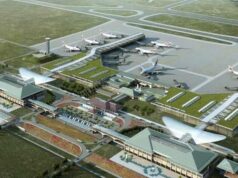Naval Traditions and it’s decline in Ancient India
(From the book NAVIGATING DANGEROUS WATERS )
By
Colonel Awadhesh Kumar

The Rahimi was an Indian merchant ship. The keel was laid on the orders of Akbar in 1590 and it sailed on its first voyage in 1593. The ship was built at a cost of nearly Rs three Crores in those days. It was a sailing ship of 1500 tons, having a length of 153 feet, height of 132 ft and depth of 31 ft. It was one of the largest ships of its time. It was utilized as a trading ship to carry goods to Arabia for onward dispatch to Egypt and Europe through land routes. It could also carry up to 1500 Haj pilgrims at a time. The home port for the ship was Surat.
In 1613, the Rahimi was seized by Portuguese pirates in the Red Sea with the 600–700 passengers on board along with the cargo, despite the Portuguese themselves having guaranteed its protection. Next the Portuguese officially refused to return the ship and the passengers. The seizure was actually planned to gain leverage at a time when the Portuguese were threatened by competition from the Dutch, the French and the newly entered British companies. But as it happened, the move backfired.
A furious Emperor Jehangir seized Daman, the Portuguese trading base along with all their assets in Surat and anywhere else within the Mughal domain. Portuguese resistance crumbled fast and they paid a very heavy compensation for their foolish act.
Alas, had Akbar concentrated on a Mughal Navy in line with his land Forces then Jehangir could have subjugated not only the Portuguese Navy and the Portuguese pirates plying in Arabian Sea, but also all other Europeans for good. Instead Jahangir laid the seeds of another disaster by welcoming Thomas Roe, the British Ambassador in 1615. This happened in spite of the fact that English trader William Hawkins was made to pack his bags and leave for good in 1611 itself. The Mughals next ordered the construction of an even bigger ship Ganj I Sawai.
Ganj-i-Sawai
The Ganj-i-Sawai was an armed 2200 ton sailing ship of the Mughals, used for trade with Arabs and for Haj pilgrimage by the Royalty. It was 170 ft long, 140 ft high and having a depth of 36ftand armed with 62 guns. A very formidable ship of her time. The ship took just two years from being ordered to its completion, indicating the Indian ship building prowess even in 1616 AD. The ship made its first voyage in 1617 and served till 1695, when it was sunk by English Pirates.
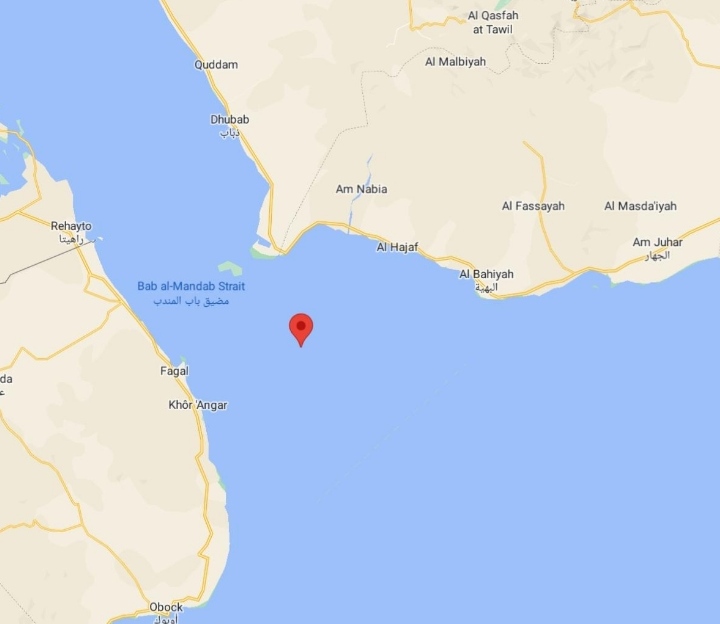
An English pirate Henry Every, apparently a British Naval officer or serving under their authority, on his ship FANCY (a frigate with eight guns) combined with four other similar types of pirate captains and their ships, attacked the Mughal ship somewhere in Mandab Strait. Ganj was coming back from Yemen to its homeport of Surat. Though part of a convoy of 25 Mughal ships, Ganj had fallen behind with its escort ship.
The escort ship was first attacked by one of the pirate ships but in the bargain the Captain of the pirate ship himself had been killed. However this encounter weakened the Escort ship which when next attacked by Fancy, was captured without much fight. It was then looted of its cargo worth Rs 32 Lakhs in those days. Next, Pirate Every went in pursuit of Ganj and finally caught up with when the Mughal ship was still eight days sailing distance from Surat.
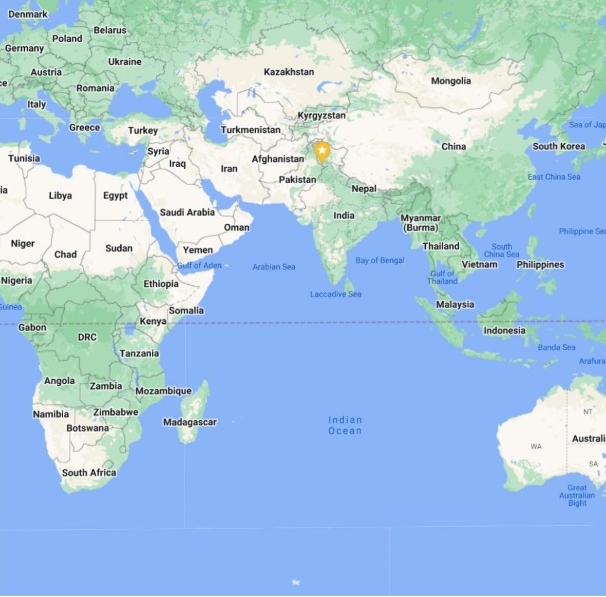
Luck was on Every’s side, as one of the guns on Ganj just exploded during firing causing severe casualty on board. The expert looters from the British Isle, experienced in piracy prevailed in the end. They boarded and captured the 400 to 500 crew and guards on Ganj along with 600 other passengers. After heaping unheard of tortures and killings of the most heinous type, the English barbarians looted treasure worth Rs five crores.
British had erred quite badly. The pirates had been actually sent to tackle the growing trade of the Portuguese with India. However, overstepping their brief probably, East India Company thought that capture of a Mughal ship would help them in bargaining at the Grand Darbar at Agra. Instead, a furious Emperor send massive Forces to close down all English establishment at each of the cities of Bombay, Bharuch, Surat, Ahmedabad and the ones at Agra itself. The East India Company finally had to pay a sum of nearly Rs six crores to cool down the anger of the emperor. Also they had to order capture of Pirate Every and his crew for execution, wherever they may be in the Indian Ocean, Atlantic, Pacific or the Indo Pacific. However Every just ‘vanished ‘. Though finally six of his crew members were caught and Brits had no choice but to execute them. Once again the fact which comes out is that had the Mughals focused on Naval power right from the days of Akbar, then after the above attack on GANJ I SAWAI, Aurangzeb would have been able to destroy/capture each and every pirate ship of any hue and each and every merchant or fighting ship of East India Company/Britain plying anywhere in the Indian Ocean or the Indo Pacific.
Why did Akbar not build a powerful Navy ? There is a story, in the early period of his reign, a Mughal ship, carrying some royal family members returning from Haj, was looted by the pirates. Akbar realized that he was unable to do anything to the pirates. So he ordered that information be gathered regarding the area from where they operate. Soon it was found out that those particular set of pirates operated from a town somewhere on the Makran Coast. Next an huge Army reached the place and not a stone or a soul was left enact of that town. Thereafter no pirate dared to touch any ship big or small, in the Arabian Sea, flying the Mughal flag. However this also ensured the decline of the Naval tradition of India.
Though basically a land power, Mauryas in time dominated the seas. The foundation of this was laid during the rein of Chandragupta Maurya himself. Patliputra was on the banks of the mighty Ganges and those days easily navigable from Garhmukteswar right up to Hooghli and then into Bay of Bengal. Mauryans understood the importance of a flourishing trade, backed by Freedom of Navigation within the mighty Ganges up to the HIND Mahasagar and beyond.
Chanakya thought through the creation of the Board of Admiralty, even for that land locked Empire (at least initially) which directly reported to the GHQ of the Emperor. The Navadhyaksha, or Superintendent of Ships, oversaw all matters relating to navigation, whether on the high seas orin land on rivers and lakes. Next, were subordinate Superintendent of Ships in charge of Ports akin to Naval Officer In charge but also empowered with collection of Port taxes and related Coast Guard duties. Arthasastra gives out the amazing details of the maritime activity of our great Mauryan empire.
Indian history clearly gives out at least seven major dynasties with superbly developed navies. Starting with Mauryas from 4THCentury BCE up to 2nd Century BCE, followed by Pallavas from 3rd Century to 9th Century CE. Even Gupta Dynasty must have had a powerful Navy, otherwise Samudragupta (someone like Napolean of France was simply too insignificant in comparison) could not have expanded his Empire, the way he did.
Cholas had emerged in 4th Century CE itself and ruled the Waves till 13th Century CE. Similarly Cheras starting from 3rd Century CE carried on till 12th Century. Two other major sea faring dynasties were Chalukyas from 6th Century to 8th Century CE and Palas from 8th to 12th Century CE. Though much is not known about sea capability of Kalingas, it seems that for quite some time Bay of Bengal was known as Kalinga Sea i.e. they must have been great sea powers at some point of time. In fact indications are there that Kaling as were a established super sea power when Nandas were ruling Magadh Empire. After all to either establish or capture any highly lucrative foreign trade and ensure full security of all the trade routes and the ports all over, it is necessary to have a very strong navy and be capable of destroying the enemy navy.
The navy was given the roles of fighting naval battles; protect the merchant ships, ports and the trading routes. It was also used when required to transport troops to distant battlefields. No wonder there were highly developed trade and fully secured trade routes to West Asia, Egypt, Greece and right up to Rome. On the East Coast Indian influence likewise was up to Java, Sumatra and deep into the Indo Pacific. It is quite clear that no matter what the Chinese claim today, they played not even second fiddle, at least up to 12th Century CE.
Kingdoms which flourished, situated on the sea coast, had heavily concentrated on their maritime trade and therefore built powerful navies both for defence and offensive actions. For them, the navy was an essential part of the military establishment along with the land forces. It was in these parts and the adjacent high seas that ancient India must have seen most of its naval warfare in practice.
The Chola, closer to the Seas, were perhaps the greatest maritime empire ever built. The organisation of naval and maritime commercial activity of Chola was totally based on the Kautilyan rules as laid down in Arthsashtra. Even the Vijayanagara Empire which had a thriving coastal trade on both the East and West coasts also followed Kautilyan dictum. In the entire Cholamandalam coast (Coromandel) in the East, and important port-cities like Honnavara, Mangalore and Gomataka (Goa) in the West. The Vijayanagara emperors had powerful Naval Officers controlling the strategic centres.
A study of some of the books like Maritime History of India by K Sridharan, History of Indian Shipping by R K Mukherjee, History of Ancient India by R S Tripathi and the Art of War in Ancient India by P C Chakravarti, reveal a fascinating insight into the sea faring capabilities and Naval power without which the spread of Indian trade, commerce and civilizational influence would have been next to impossible.
The above remains a fact even though there are hardly descriptions of any direct naval battles between two forces. However the Navy specially on the Eastern side must have played strategic roles all over the South East Asia.
Today we have an Exclusive Economic zone of 23. 05 lacs Sq Km. In comparison the Indian land mass covers an area of 32. 87 lacs Sq km. Right from the Mauryan era at least this has been a very valued domain. India had Golden periods when the rulers ensured full control over this EEZ. Apart from trading with far off places, within the EEZ, fishery, pearl fishery and conch fishery were also developed extensively. There was enormous amount of revenue derived from the above activities directly and through taxation covering trade in these commodities.
The ancient Indians also had a superb Shipbuilding skills. Different varieties, and properties of wood which went into the making the different classes of ships along with other materials used was well known. A book written in time of King Bhoja (c. 1010 CE – 1055 CE) of Malwa gives out great details of shipbuilding activities. It even mentions different types of ships, suitable for naval warfare. Ships were single, double, or triple-mast. They were both large and sturdy, equipped with up to a hundred oars, and could carry thousands of troops across large distances over the water.
Naval developments on the East Coast withered first. Though on the West coast it continued well into the colonial periods. This was due to the tendency of Indian powers to concentrate on superiority on land which led to the initial decline of the indigenous Indian naval traditions and then nearly its demise. The naval traditions built over time and especially in the ancient period, however, have begin to influence the development of the navy undertaken by independent India.
A study published around 10 years back had said that some eleven percent of Australian Aboriginal DNA is of Indian origin. It estimated that these Indian immigrants arrived about 4, 000 years ago in Australia. No wonder Indian maritime trade was flourishing even during the Indus Valley Civilization. Ports on Gujarat Coast traded with Mesopotamia and Arabia and even Far East. At the end of 1st century BCE Indian products were sought after by Romans. This trade had increased manifolds by the time Augustus captured Egypt.
The navy has been mentioned even in the Mahabharat, though historical records of an organized Naval Force starts from the Mauryan period only. By the time of Ashoka, Mauryan diplomats had established massive diplomatic missions in Greece, Syria, Egypt, Rome and other European countries. Also towards Malay peninsula. The period under the Mauryan empire also witnessed various other regions of the world engage increasingly in the Indian Ocean maritime voyages.
The Maritime Silk Routewas primarily established and operated on the Eastern Side by Indian and Southeast Asian sailors, Kalinga and Tamil merchants in India and Southeast Asia. On the Western side Indian sailors and merchantsin combination with Greco-Roman merchants in East Africa and India and by Persian and Arab traders in the Arabian Sea and beyond completed the entire route. Thus this silk route as such had nothing to do with the Chinese Sailors. Much later they simply super imposed themselves on this lucrative trade route. The many historians of 18th and 19th Century thereafter glorified this fact.
Chandra Gupta Maurya had appointed a Navadhyaksha even when his fledgling empire in Bihar was still a landlocked State. Surprisingly 2150 years later in 1820s an enterprising and prosperous farmer in North Bihar’s present district of Samastipur, at a Village called Chhatauna, on the banks of River BurhiGandak, had appointed his own local Navadhyaksha called GHATWAR.
There was an Oinwar and a Dronwar dynasty which had ruled large parts of North Bihar as vassals of the Delhi Sultanate. Under the king Shiva Singh, they did attempt to revolt against the throne in Delhi although he was eventually defeated. In 1576, Mughal Emperor Akbar conquered Bengal Sultanate. He then divided Bihar and Bengal each into one of his original twelve imperial provinces or Subas. During the period of Mughal rule after Aurangzeb, much of Bihar was under the sway of local Zamindars or chieftains who maintained their own armies and territories. These chieftains retained much of their power until the arrival of the British East India Company. After the Battle of Plassey, Bihar again passed into the control of Nawab of Bengal and eventually came under British suzerainty.
The last full fledged King or more appropriately a Chieftain of Dronwar dynasty was King Rai Gangaram (around 1625 AD). He had his power centre in the Saraisa Pargana. At present, the region of the Saraisa pargana is the area covered by the Samastipur district surrounded by the River Ganga in the south and river Burhi Gandak in the North. The 320 km-long Burhi Gandak passing through this area finally flows into river Ganga at Gogri, near the district headquarters town of Khagaria in North Bihar. From there Kolkata is around another 550 km away.
After the demise of King Gangaram his state disintegrated quickly. Later on two of his young great grandsons Nripat Singh and Sripat Singh were taken by their mother to her parental house. Her father was a modest farmer in the village of Chhatauna. This village is located around thirteen km from Samastipur Town and bang on the banks of Burhi Gandak.
Then around four or five generations later there was born a son Subansh Singh in the lineage of Nirpat Singh during early 19th century. Sripat Singh’s lineage had ended quite early. Through dint of hard work Subansh Singh became a prosperous farmer. He was quite innovative and enterprising at the same time. Together with his son Lekh Narain Singh, an equally innovative person with superb administrative acumen and humane approach they started dabbling in foreign trade.
Realizing the vast potential of waterways as trade routes, the father – son duo, soon built their own fleet of boats both large and small including large barges. These wooden boats had carrying capacity of 40 tons to 400 tons. The duo also collected experienced and skilled boat makers having deep knowledge of Wood along with knowledge of designing and constructing riverine boats. It is said that the big boats used for the export of agricultural produces, had two masts and were called ‘Dopala’ jahaj, The lower and the upper parts of its rudders was made jointly of ‘Jamun’ wood and timber respectively. The lower part which remained in water was made of ‘Jamun’ wood because it does not decay in water. The boats were designed exclusively for transport rather than for battle, therefore main body of these boats had little space for sailors or other personnel on its deck.
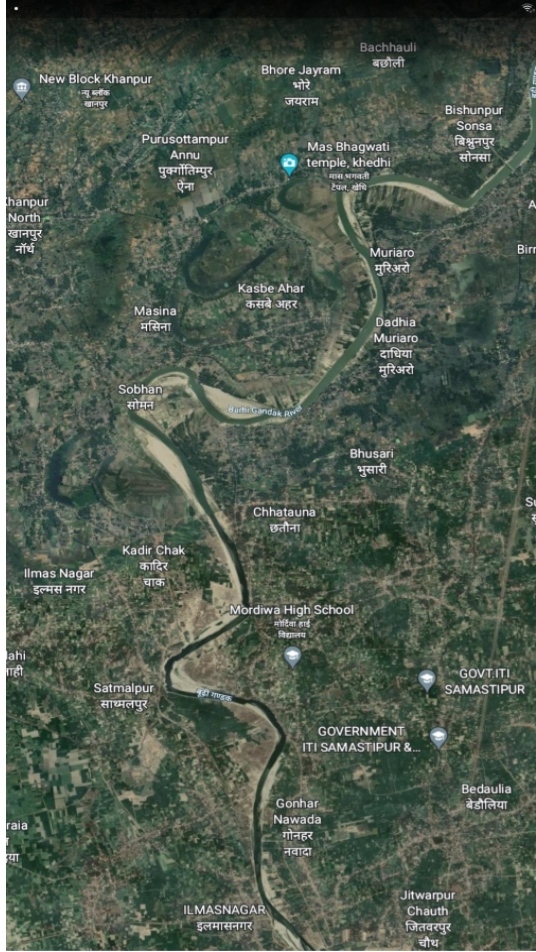
The meandering Burhi Gandak all along its 320 km route.
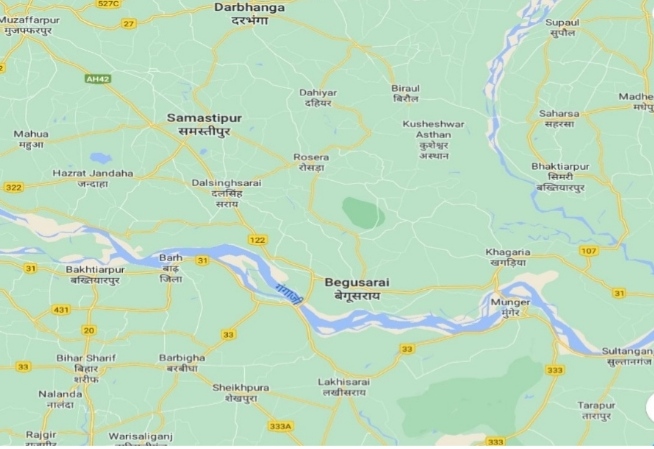
Normally, when these bigger ’Jahaj’ sailed laden with goods, dozens of other smaller boats used to sail along with them. These smaller boats carried personals for various types of works which were required to be done enroute. A small boat, carrying sailors expert in navigation, sailed in the front of the Jahaz. The sailors in these boats carried a bamboo pole to frequently measure the depth of waters on the route and sending voice signals to the main ‘Jahaj’ by saying very loudly the word ’Bom Bom’. Sometimes, ‘jahaj’ had to be pulled up by the personals walking along the river bank to sail against the wind and for disembarkation. Other boats carried armed men to defend against Gangetic Pirates. Then there were boats catering for all the logistics for the entire Flotilla.
Thus the water ways of the Burhi Gandak-Ganga link nearly 100km in length, was used as a goods trade route between the village of Chhatauna and Calcutta Port (now Kolkata) a total of around 650 km. Within time they established trade relationship with Mauritius where Dronwars Brahmins from Bihar had started flourishing by then. It is said that Veer Kunwar Singh had received vast quantities of logistic help clandestinely through this riverine route from North Bihar during 1857.
By 1870 the trade route got extended i.e. Chhatauna- Calcutta – through the Bay of Bengal – right through the Indian Ocean to Mauritius. The basic export commodities comprised turmeric, Chilies, spice products and other agricultural products to Mauritius. From there they imported molasses, red sugar etc.
During the period Burhi Gandak river was much deeper and was suitable for sailing for ship like boats. Now, particularly after high bandhs on the both sides, the river bed has gone up because of continuous siltation.
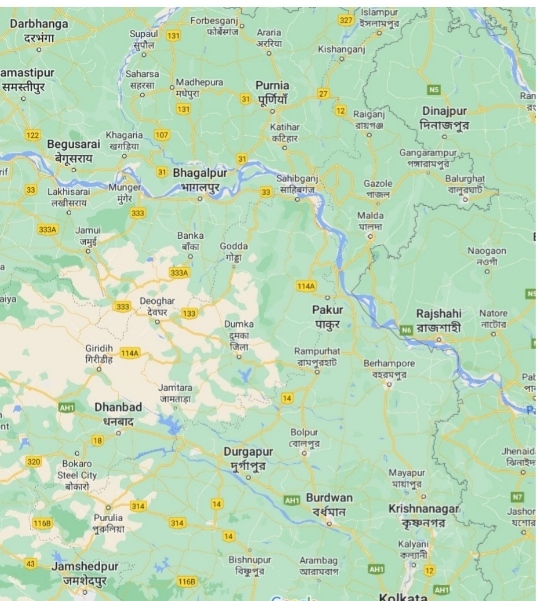
Subansh Singh had developed not only his own Gangetic Fleet but also had large number of personnel to look after the navigational, maintenance and administrative aspects of his trade activities. In time they even established their office which was located at Sir Saed Ali Lane in Calcutta. At Chhatauna and Khagaria, he had Ghatwars who reported to Ghat Dewan, who in turn reported to Dewan at Chhatauna. The details of administrative set up at Kolkata is not known. However the administrative effectiveness of the set up can be gauged from a much narrated family tale. Ramheet Singh had a daughter whose daughter Bharati was married into a very prominent family of Mauritius …the Gajadhars. The marriage had taken place from the Village of Chhatauna. The Barat had come from Mauritius and stayed for four days. This was year 1936. It had been ensured by Shri Ramheet Singh that every morning, for those four days, a boat from Kolkata arrived at Ghat of Chhatauna, laden with fruits and many delicacies from Mauritius. These were then served to the Baraatis (Groom’s party). Imagine those days there were hardly any means of direct communication but everything had worked out flawlessly.
I read about all the above in a blog written by Shri Sachchidanand, only a few months back. He happens to be my own uncle that is younger brother of my father late Prof Parmanand Singh ‘Madan’, a prominent historian and a renowned teacher leader of Bihar.
A vast fortune was thus built by the enterprise of father-son duo-Subansh Singh and Lekh Narayan Singh. To reduce competition the crafty British then offered a huge Zamindari to such types of Indian trading families. Thus the wealth created was utilized by Ramheet Singh, son of Shri Lekh narain Singh to buy a huge Zamindari from the British. Ramheet Singh became a very prominent Zamindar of the region. However this affected the river based trade, as now the big Zamindar had to devote much of his time to the administration of his lands and villages covered by the Zamindari. By the time his son Shri Ayodhya Prasad Singh took over the reigns, the trade had lost its former glory, in spite of the fact that by now there were ties established in Mauritius through marriage of a daughter of his sister. The construction of Howrah Bridge in 1874 too played its role in thwarting the movement of big boats from River Ganga towards Hooghly. Also the coming of North Bengal Railways and later the Tirhut Railways in 1874 from Dalsinghsarai to Darbhanga slowly started impacting the river based trading.
Finally in the time of Shri Ram Lakhan Singh son of Ayodhya Prasad Singh, all trading activities were over. Ram Lakhan Singh also took very active part in the Independence movement as District President of Darbhanga Distruct and had to spend several years in British Jails. Right after Independence, he quit active politics and joined the Bhudaan Movement of Binobha Bhave. His lieutenants went on to become Union Minister/Governor and Chief Minister of Bihar. He donated most of his lands much before abolition of Zamindari System in Bihar. Shri Ram Lakhan Singh happens to be my Grandfather. He died in 1982.
Now time has come for India to once again re establish the lost glory of our Naval traditions since Mauryan times
References:
Maritime History of India – by K Sridharan
History of Indian Shipping – by R K Mukherjee
History of Ancient India – by R S Tripathi
Art of War – by P C Chakravarti
The story Untold – The links between Australian Aborginal and Indian tribes – by KumudMerani
Nur Jahan Empress of Mughal India – by Elilison Banks Findly
Treasure Neverland: Real and Imaginary Pirates- by Neil Rennie



